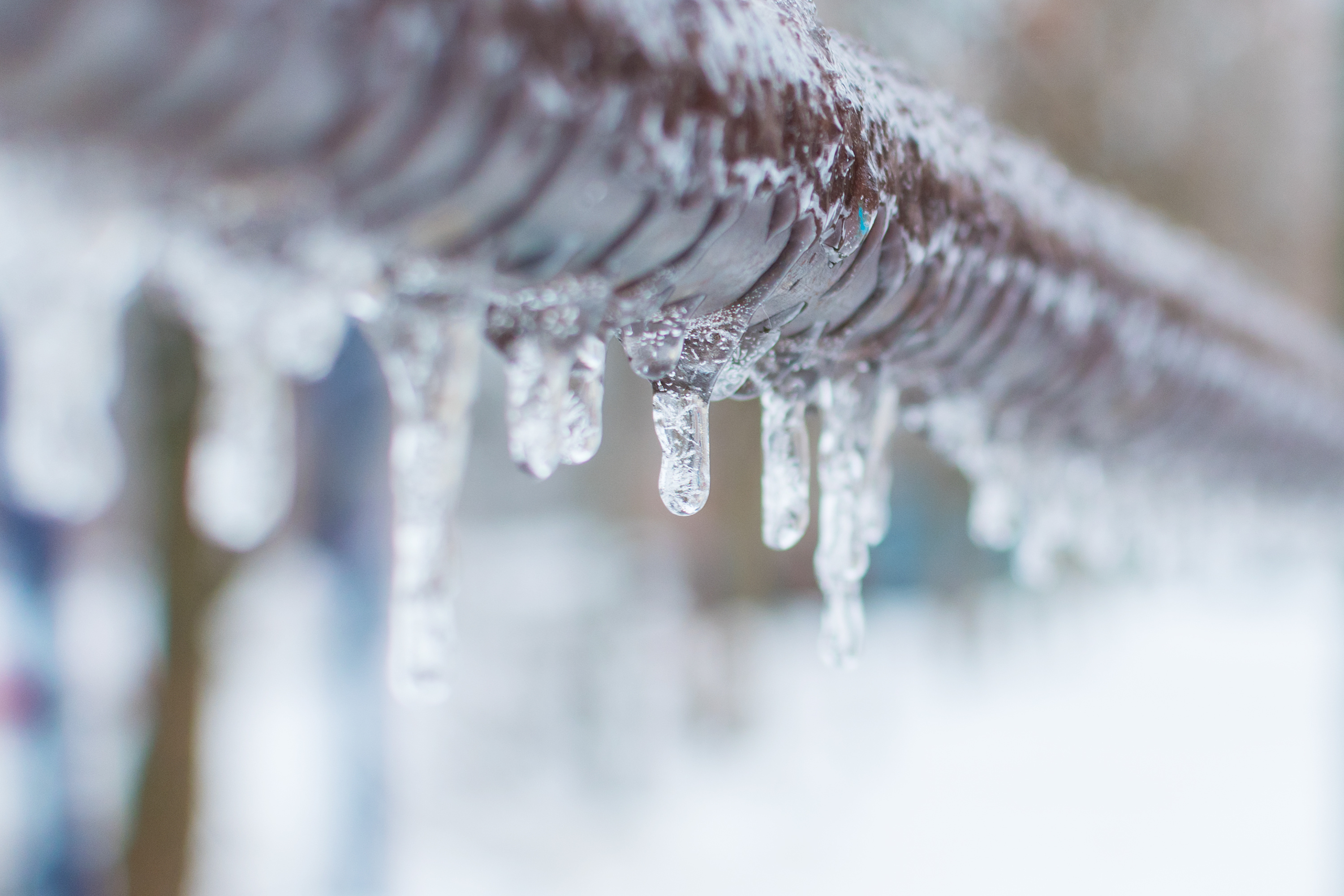Building Tips | Residential Buildings | Riding Arenas | Pole Barn Builders
7 Tips to Avoid Frozen Pipes in Your Pole Barn
Meet FBi's Marketing Content Creator, Julie. With a design degree from Purdue, she develops our brand, captures stunning building photos, and crafts informative brochures.
There are thousands of ways pole barns can be different from one another, but there’s one thing that all pole barns have in common, they have to deal with cold weather.
 Unfortunately, frozen pipes often burst and can flood your post frame building. With all of FBi’s customers scattered throughout the midwest, we wanted to present you with seven simple tips to avoid frozen pipes, even in the coldest weather.
Unfortunately, frozen pipes often burst and can flood your post frame building. With all of FBi’s customers scattered throughout the midwest, we wanted to present you with seven simple tips to avoid frozen pipes, even in the coldest weather.
Following these precautions, you will know how to prevent pipes from freezing and have a better chance of saving yourself from the headache of a pipe burst and possible water damage that will follow.
7 Tips to Avoid Frozen Pipes in Your Pole Barn
- Underground Pipe Depth
Ensure pipes that extend out past the perimeter of the building are buried below the frost line (typically 3 feet, 36 inches, deep in Indiana & Illinois).
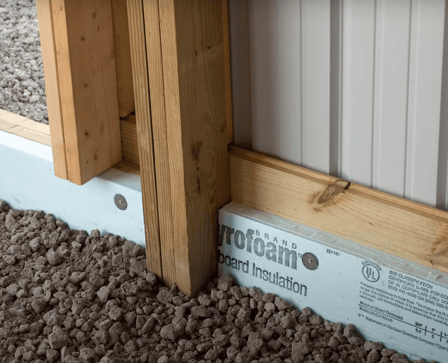 Pipes within the edge of your post frame building will most likely need to be closer to the floor slab to reach the fixtures within the building; therefore, these pipes are more likely to freeze and require extra protection (such as pipe wrap or insulated tape).
Pipes within the edge of your post frame building will most likely need to be closer to the floor slab to reach the fixtures within the building; therefore, these pipes are more likely to freeze and require extra protection (such as pipe wrap or insulated tape).PRO TIP: Installing 2” foam (featured right) on the inside of your pole building’s baseboard will prevent the area under the floor slab from freezing. This option helps keep your building cooler in the summers and warmer in the winters, which will conserve energy and ultimately help reduce your electric bill. A reduced electric bill means extra savings for you.
- Insulate Exposed Pipes
Install insulation wrap on any exposed pipes. Below we list the most common pipe insulation options that you will find in the plumbing aisle at your local home improvement store: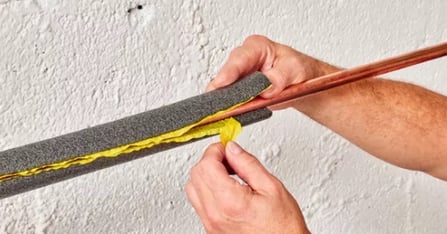
Rubber Tubular Pipe Sticks: This option is more durable and energy-efficient than any other pipe insulation material. It also expands and contracts as temperatures shift and can be safely installed overheat cables or tape, which we will get later in this article.
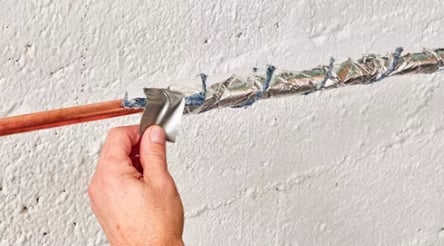 Foam Tubular Pipe Sticks: Insulating pipes with closed-cell polyethylene foam (top featured imaged) will be quick and easy as it comes as a pre-slit and self-sealing tube. However, this option does not expand and contract like rubber and should not be installed over heat cables or heat tape.
Foam Tubular Pipe Sticks: Insulating pipes with closed-cell polyethylene foam (top featured imaged) will be quick and easy as it comes as a pre-slit and self-sealing tube. However, this option does not expand and contract like rubber and should not be installed over heat cables or heat tape.Fiberglass Pipe Wrap (bottom featured imaged): A simple, effective way to insulate pipes of all diam

- Keep Pipes Warm
Insulating and heating your post frame building as a whole is always the ideal option. However, that's not always the best option for everyone. So a great solution to keep your pipes warm is with heat tape or heat cables.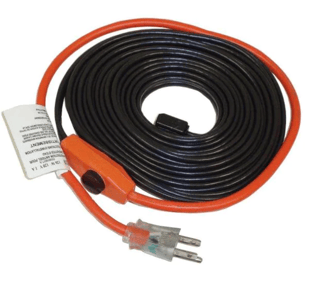
- Heat Cable: This material is somewhat stiff, but it’s flexible enough to wrap around your pipes and won’t shrink in cold air. The good news is heat cable can be trimmed to the length you need, and you don’t have extra material.
There are two different types of heat cable, constant wattage and self-regulating. We recommend the self-regulating option as it won’t rise above a particular temperature. Constant wattage will require controllers to help regulate them, so they don’t overheat.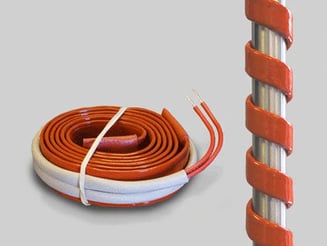
- Heat Tape: This is exceptionally flexible, making it better for tight spaces and oddly shaped pipes. However, you cannotcut heat tape, so you may end up having more than you need.
You can typically plug-in heat tape into a standard 110 outlet to provide consistent warmth for the pipes. However, you will need to pay attention as tape can overheat and break down.
- Heat Cable: This material is somewhat stiff, but it’s flexible enough to wrap around your pipes and won’t shrink in cold air. The good news is heat cable can be trimmed to the length you need, and you don’t have extra material.
-
Prevent Heat Leaks
The most common culprit for frozen pipes is an air leak that allows cold winter air to affect nearby water pipes. Affected water pipes will ultimately lead to a water leak.
Look for air leaks around doors, windows, electrical wiring, dryer vents, and pipes. Once Identified, use some form of insulation or sealant to close off these air leaks to prevent cold from entering the space.
PRO TIP: Any pipes entering a barn from the outside can be sealed with weather stripping or caulking.
-
Protect External Faucets
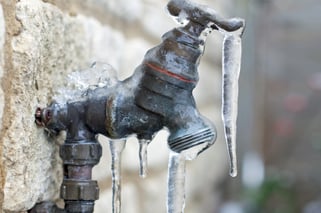
Before winter sets in, disconnect exterior garden hoses and shut off the water to any exterior fixtures and valves — ice builds up within hoses and taps, which causes damage to the pipe inside the wall. If you notice a decrease in your water supply, there’s a good chance that you have a water leak somewhere. -
Keep Water Moving
Turn on a faucet when temperatures plummet below zero and let the water drip. Allowing the water to drip will provide a slow movement through the pipes, reducing the probability that the water will freeze.
Another alternative, especially if your pipes are located near exterior facing walls, let your faucet drop and apply heat to the pipes with a space heater. If you choose to go this route, please make sure you check on your space heater periodically.
-
Regulate Internal Temperatures
For esthetic purposes, it’s very common for a cabinet to be installed around an exposed pipe. However, cabinets installed on exterior walls will keep the air inside the cabinet cooler from the rest of the pole barn.
Cracking the door to these cabinets will allow the pipes to stay at room temperature and prevent freezing.
Do NOT turn off the thermostat at night or if you intend to leave the building unoccupied. If room temperature within the building drops below freezing, the uninsulated pipes within the building will freeze.
If you intend to leave the building unoccupied during the winter, consider turning the water off or draining the water system instead of turning down the thermostat.
Which Decision Will You Make for Your Pole Barn?
Making the best decisions for your post frame building can be overwhelming and always lead to more questions.
Few possible questions you may have:
- Will a crawl space help prevent frozen pipes?
- What options do I have to help decrease my homeowners’ insurance cost?
- Would it be a good idea to install a water heater in my pole barn?
These are questions our Project Sales Consultant team would be happy to help answer for you! Because at the end of the day, we want to help put together the best solution for you and your project.
The last thing we want is for you to have a pipe burst and create water damage that will require repairs and more cost for you in the long run.
Have more questions about open-sided buildings not covered in this article? Please contact FBi Buildings at 1.800.552.2981 or click here to email us. If you’re ready to get a price, click here to request a quote, and a member of our sales team will call you.
